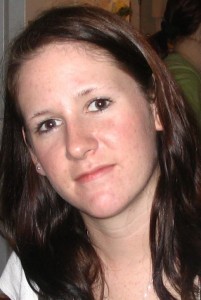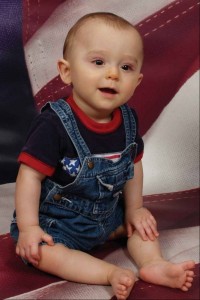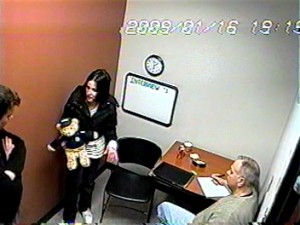Proving Melissa Calusinski’s innocence
By Gregory Harutunian For Chronicle Media — December 9, 2015

A photograph of Melissa Calusinski, from a Facebook site. She is currently serving 31 years at a state prison, although evidence strongly indicates her innocence.
This is the first of a two-part series on the Melissa Calusinski case.
It is a matter of record. In Lake County, since 2011, there have been numerous verdicts overturned including six high-profile murder convictions. These reversals were largely due to coerced confessions obtained through members of the Lake County Major Crimes Task Force, the denial of science and DNA evidence, and in one case, the alleged manufacture of evidence.
These same reversals have resulted in multi-million-dollar settlements that ultimately became the burdens of taxpayers.
Upon assuming elected office, Lake County State’s Attorney Michael Nerheim organized a panel to review such potential wrongful convictions, but the case of former teacher’s assistant Melissa Calusinski has yet to be referred. New disclosures cast a different light on the litigation leading to her imprisonment.
Nearly four years ago, a jury had found her guilty of first-degree murder and aggravated battery to a child in the death of 16-month-old Benjamin Kingan. The jury had heard a taped confession, along with the prosecution’s contention that she had dropped the child in a moment of frustration.
An appellate court later sided with the verdict, as did the Illinois Supreme Court, based solely on evidence from the original trial. She was sentenced to 31 years in state prison.
“He (Nerheim) actually looked at the Calusinski case, as one of the first cases to be reviewed,” said Cynthia Vargas, spokesperson for the county State’s Attorney’s Office. “Both subsequent courts upheld the jury’s verdict. The reason this is moving forward in the courts (rather than referral) is that he personally went through the entire file.”
Requests for comment from Nerheim were not returned.
Evidence review
A Sept. 21 hearing in the courtroom of Lake County circuit court judge Daniel Shanes was convened ostensibly for an evidence review. The initial case had run its course through the state’s justice system, and returned to square one.
The Downers Grove-based firm of Kathleen Zellner and Associates, had completed filing the defense motions and documents. The prosecution was given an extension until Dec. 18, to make its response.
“We are entering phase two of these proceedings, where our office will put in arguments,” said Vargas.
Zellner later appeared before a phalanx of reporters, armed with cameras and microphones, seeking why the renewed effort may succeed.
“It’s a deliberate process whenever you have a jury conviction,” she said. “The appellate court didn’t have the autopsy, as to cause and manner of death. We have two key pieces of evidence, the X-rays showing there was no skull fracture, and the state’s own expert witness has now contradicted his finding (and testimony) that there was a skull fracture. “

A photograph of 16-month old Benjamin Kingan, who was found unresponsive at the Minee Subee Daycare Center, and later pronounced dead.
Toddler’s death
On Oct. 27, 2008, a toddler, Benjamin Kingan, was laid down to sleep at the Minee Subee Daycare Center in Lincolnshire, and awoke with a large bump on the back of his head, as cited in the nursery’s records. The parents immediately took the child to their pediatrician, where no injuries were apparent. Of note, Calusinski was not hired as a teacher’s assistant until the following month.
On recurring medical visits, his head size continued to grow, eventually from the 50th to the 95th percentile, while exhibiting symptoms of abnormal sleeping patterns, behavioral outbursts, and projectile vomiting episodes.
By Jan. 14, 2009, the child was found unresponsive at the facility, and was pronounced dead at the local hospital. A cursory autopsy, conducted by Dr. E. Choi, for the Lake County Coroner’s Office, indicated a traumatic brain injury and skull fracture of recent origin, according to the report, obtained by the Chronicle, through the Freedom of Information Act.
The last person with the child was Calusinski.
Interrogation method
The matter of coerced confessions has been tied to the use of techniques ascribed by the John Reid Institute, devised in the 1940s, and applied by law enforcement agencies including those in Lake and McHenry counties. The methods employ behavioral analysis for character traits, the power of suggestion, fatiguing the subject, and the implication of promises. It also outlines the settings for the interview room, and placement of interrogators in relation to the subject.
“The Reid Institute method, although archaic, is a very effective tool to gain confessions, if applied correctly,” said retired McHenry County sheriff’s department investigator Tony Olszewski. “It’s true that once the suspect’s Miranda rights are waived, you can lie to them, within reason, you can manipulate them, alter facts, bend facts, and paint a picture of freedom.
“The key is … you cannot promise them anything,” he said. “The paramount consideration, though, is a good interrogator has to be able to discern the subject’s mental capacity, and abilities. Otherwise, you can easily go down the wrong path.”
Paul DeLuca, Calusinski’s original defense attorney, concurred.
“Once that happens, and the Miranda rights are given up, the interrogation team can stretch the truth within reason. Most wrongful convictions occur where the person is innocent, they’re open, and forthright, with nothing to hide … like Melissa.”
The interview
Calusinski was taken to the Lake Zurich police department’s Interview Room No. 1, on Jan. 16, two days after Kingan’s passing. Two officers, one being the current Lake County Major Crimes Task Force commander, George Filenko, were there to interview her. After providing basic information, she amiably signed a statement waiving her Miranda rights, at their request.
The taped confession, which lasts more than nine hours, was also obtained by the Chronicle. It proved to be the most damaging piece of material to her case, although the admissions did not correspond to the physical evidence. DeLuca, as well as family members, noted Calusinski has issues expressing thoughts into verbal communication and interpreting conversations.
Filenko makes the comment, used during her trial, that with the child, “This is a serious injury … embarrassing, like he was dropped from the seventh floor of a building onto concrete.”

Calusinski with a teddy bear, given to her by interrogators to demonstrate her movements with the child. (photo taken from interrogation tapes)
The interview then turns into an interrogation, and at one point, Filenko is screaming and pounding the interview room desk. Calusinski’s emotions are played upon, using her affection for the child and the suggestion of “dropping him,” accidentally.
Five different scenarios for the death are offered by the interrogators, at different times, while she is distraught and crying, and being left alone to “think about it.” At one juncture, the child’s autopsy is reenacted, as if in real time, with occasional implied interjections that being dropped was the only way to explain the child’s injuries.
The word “slammed,” is introduced and repeatedly mentioned by the officers. The framework of Calusinski being annoyed or impatient with the child begins to take shape. After five hours, and denying any harm to the child more than 75 times, she relents, and starts agreeing with the conjectures.
DeLuca maintained, during the initial trial, and later, that she confessed out of fear, and a desire to go home. The interrogators had intimated as much, toward the end, and she wanted to “go home to feed my puppy.” Instead, she was taken to the Lincolnshire police station, questioned again, and arrested.
A request for comment from George Filenko was not returned.
Initial trial
The initial trial took place Nov. 11, 2011 with prosecutors alleging the death was caused in the manner that Calusinski had confessed, on tape. Dr. Choi reiterated his findings, although medical experts collided on a pre-existing injury and excess blood in the brain resulting from “head-banging,” since the child would throw his head back during tantrums.
A key piece of evidence, the X-ray from the time of autopsy, was determined to be “unreadable,” as the picture was clear without any gradient variations. It also appeared that no one knew how to make the picture “readable.” Lead prosecutor, Christine Bishop, was successful in her arguments to the jury and obtained the guilty verdict, after seven hours of deliberation.
Calusinski’s confession
Calusinski’s confession had overwhelmed any other evidence, or arguments, toward her defense. Saul M. Kassin’s article in the September 2012 American Psychologist, “Why Confessions Trump Innocence,” states: “The (first) problem is that suspect characteristics and police practices can conspire to induce innocent people to confess to crimes they did not commit.
“The second problem is that false confessions, once taken, arouse a strong inference of guilt, thereby unleashing a chain of confirmation biases that make the consequences difficult to overcome despite innocence.”
However additional evidence through scientific components of forensic pathology on the child’s medical data, and a basic computer software program, appeared in June 2015, to revive the effort in proving Calusinski’s innocence.
— Proving Melissa Calusinski’s innocence —







